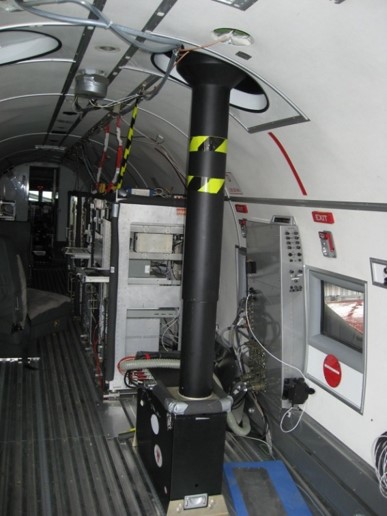

The AMALi transmits Nd:YAG laser light pulses either upward (zenith configuration) or downward (nadir). The laser light interacts with and is changed by atmospheric constituents influencing the backscattered light intensity. The backscattered light is collected with an off-axis telescope mirror and directed onto the detection system. The detection of the two wavelengths 355 nm and 532 nm (the latter in both perpendicular and parallel polarisation mode) provides an information on existence, distribution, backscatter and depolarisation of aerosols and thin clouds in the troposphere. The applied 2-minute integration time results in a horizontal resolution range from 4.3 km to 12.4 km for a minimum of 130 km/h and a maximum of 370 km/h aircraft cruising speed over ground, respectively. The transient recorders register the backscattered light with a maximum sampling rate of 21 MHz corresponding to a range/height resolution of 7.5 m. The on-line quick look data evaluation allows an immediate interpretation.
| Name | Airborne Mobile Aerosol LIdar |
| Measured species | Tropospheric Aerosol (vertical profile in nadir configuration) - Airborne System |
| Method | Measurement of number of backscattered photons versus time of pulsed laser |
| Quantity primary | The profiles of backscatter coefficients (m-1 sr-1) and depolarisation information |
| Quantity secondary | Qualitative separation of aerosol types according to wavelength dependence and depolarisation |
| Spectral range | Simultaneous measurements with 532 nm and 355 nm wavelengths |
| Altitude range | 2.5–3 km down to the ground/sea level or from plane altitude upwards to tropopause |
| Vertical resolution | 7.5 m |
| Temporal resolution | 2 min |